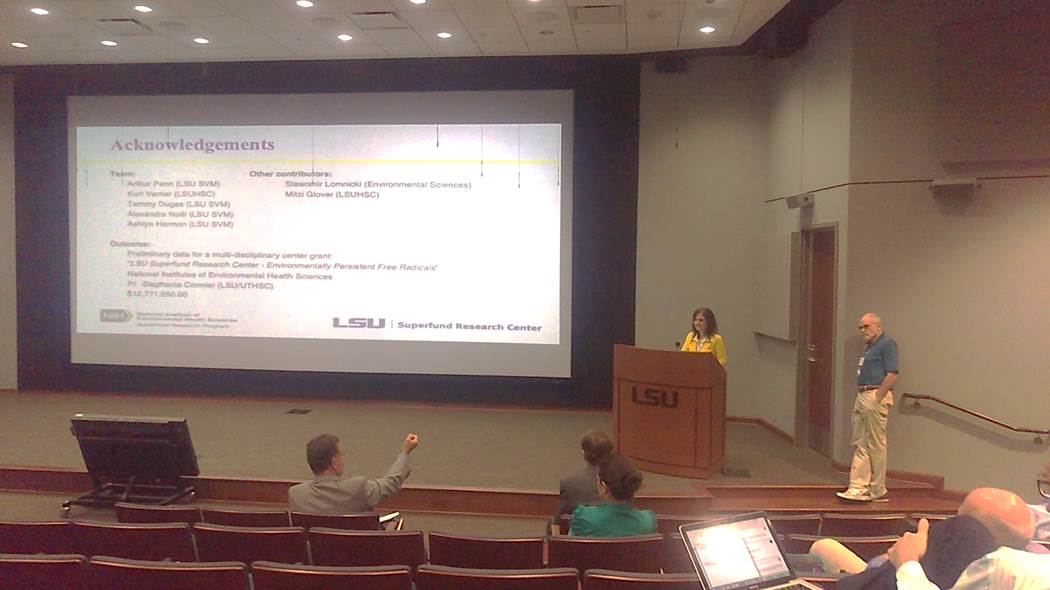LSU SRP Presents at the LSU Biomedical Collaborative Research Program Workshop

Dr. Tammy Dugas and Dr. Arthur Penn answer questions about cardio-pulmonary responses following inhalation exposure to environmentally persistent free radicals at the LBCRP workshop on September 8th, 2016.
Dr. Tammy Dugas (Professor, LSU A&M School of Veterinary Medicine and LSU SRP Oxidative Stress Core Leader) and Dr. Arthur Penn (Professor, LSU A&M School of Veterinary Medicine) presented at the LSU Biomedical Collaborative Research Program (LBCRP) workshop on Thursday, September 8, 2016. The LBCRP is a collaborative effort between Louisiana State University and Agricultural & Mechanical College (LSU A&M), the Pennington Biomedical Research Center (PBRC), and LSU Health Sciences Center-New Orleans (LSUHSC-NO) School of Medicine to promote interdisciplinary and other team approaches to biomedical research.
The research Drs. Dugas and Penn presented was funded by a LCBRP grant to Dr. Penn, Dr. Kurt Varner (Professor and Head, Department of Pharmacology & Experimental Therapeutics, LSUHSC-NO and Research Leader for LSU SRP Project 4: Environmentally Persistent Free Radicals Increase Cardiac Vulnerability to Ischemia), Dr. Dugas, and Dr. Alexandra Noel (Post-Doctoral Researcher, LSU A&M School of Veterinary Medicine). The work builds on research funded by the National Institute of Environmental Health Sciences (NIEHS) at the Louisiana State University Superfund Research Center (LSU SRP) to characterize and synthesize environmentally persistent free radicals (EPFRs).
Environmentally persistent free radicals are a unique particle-pollutant system that forms during combustion processes that can penetrate deep into the lungs, move into the blood, and potentially cause systemic and localized oxidant and inflammatory reactions. Traditional inhalation delivery systems used in exposure studies are difficult to use for extended periods of time and do a poor job replicating exposure to ambient air. Dr. Penn and colleagues developed a new customized whole-body inhalation system that will more closely model “real world” inhalation exposures to airborne particulates containing EPFRs.